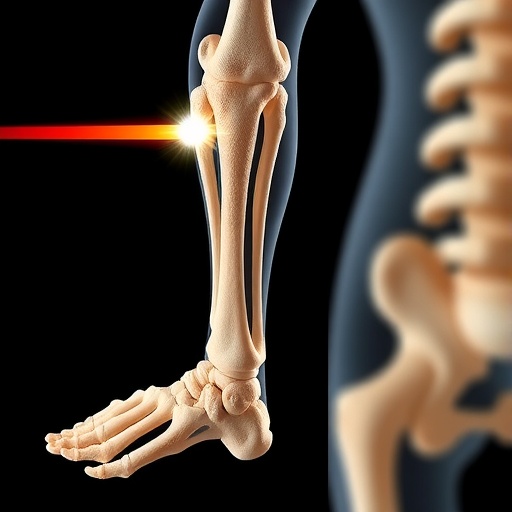A novel randomized clinical trial conducted recently sheds new light on therapeutic interventions for cerebellar ataxias, a complex and heterogeneous group of neurodegenerative disorders marked by progressive loss of motor coordination. This study, published in JAMA Neurology, demonstrated that high-intensity aerobic training performed at home yields superior improvements in patient symptoms, fatigue levels, and aerobic fitness compared to dose-matched balance training, which has traditionally been employed as a rehabilitative strategy. These findings represent a significant advance in the management of ataxia symptoms, providing a practical and scalable approach that can be self-administered by patients outside of clinical settings.
Cerebellar ataxias encompass a spectrum of disorders characterized primarily by disruptions in the fine coordination of voluntary movements, resulting from dysfunction or loss of neurons within the cerebellum and its connected circuits. These disturbances manifest as gait imbalance, impaired speech, and difficulties with hand-eye coordination. Given the progressive nature of these conditions and the current lack of definitive pharmacologic curative options, physical rehabilitation remains a cornerstone of symptomatic management. However, previous interventions focusing predominantly on balance exercises have shown variable efficacy, often limited by logistical challenges in accessing supervised therapy and the inability of patients to sustain gains over time.
The study employed a rigorous randomized controlled design involving participants diagnosed with various forms of cerebellar ataxias. Subjects were assigned to either a home-based, high-intensity aerobic exercise program or a dose-equivalent regimen emphasizing balance training. The aerobic regimen consisted of exercises designed to achieve and maintain elevated heart rates, promoting cardiovascular fitness while targeting neuromuscular control pathways. Intervention adherence was closely monitored through remote supervision and self-reporting tools, ensuring fidelity to the prescribed protocols.
Outcome measures included standardized ataxia rating scales, quantification of subjective fatigue using validated instruments, and objective assessments of aerobic capacity via cardiopulmonary exercise testing. At the conclusion of the intervention period, participants engaging in aerobic training exhibited significantly greater reductions in ataxia scores, indicating amelioration of motor coordination deficits. Moreover, fatigue severity, a common and debilitating symptom impacting quality of life, decreased substantially among these individuals. Aerobic capacity improvements confirmed the physiological impact of the training, underscoring the systemic benefits of sustained cardiovascular exertion in this population.
Importantly, the durability of the observed benefits was examined through a one-year follow-up. Participants who maintained regular aerobic exercises post-trial retained symptomatic improvements and enhanced aerobic fitness, indicating that continued engagement in high-intensity aerobic activity confers long-term advantages. This contrasts with previous rehabilitation paradigms wherein gains often diminish upon cessation of supervised therapy, emphasizing the necessity of interventions that are both effective and practicable for sustained implementation.
The underlying mechanisms by which aerobic exercise confers improvements in cerebellar dysfunction are multifaceted. Aerobic training may induce neuroplastic changes within cerebellar and extracerebellar networks, enhancing synaptic efficacy and promoting the preservation or recruitment of compensatory pathways. Additionally, systemic effects such as improved cerebral blood flow, modulation of inflammatory mediators, and increased neurotrophic factors likely contribute to neuroprotection and functional recovery. These biological processes align with emerging evidence supporting exercise as a potent neurorehabilitative modality in various neurodegenerative diseases.
Another critical consideration addressed by the study is the feasibility of delivering high-intensity aerobic training remotely, especially given the mobility restrictions faced by individuals with ataxia. The home-based intervention was structured to facilitate safe, guided exercise sessions without the need for frequent clinical visits, harnessing technology for monitoring and coaching. This approach has broad implications for expanding access to effective therapies, reducing healthcare burdens, and empowering patients to take active roles in managing their conditions.
While balance training remains a valuable component of ataxia rehabilitation, its comparative effectiveness was limited in this trial relative to aerobic exercise. The matched dosage ensured that differences in outcomes were attributable to the nature of the exercise rather than volume alone. This insight calls for a reevaluation of rehabilitation protocols, advocating for the incorporation of aerobic elements to optimize functional outcomes.
The study’s findings also underscore the importance of individualized exercise prescriptions tailored to patient capacity and disease severity. High-intensity aerobic training must be adapted to ensure safety and maximize adherence, highlighting the role of interdisciplinary teams including neurologists, physiotherapists, and exercise physiologists in designing and implementing comprehensive care plans.
Furthermore, this research sets a precedent for future clinical trials exploring multimodal interventions in cerebellar ataxias, encouraging the integration of neurological assessments with cardiovascular and metabolic health metrics. Expanding the evidence base with long-term, larger-scale studies will be crucial to validating and refining these preliminary findings.
In conclusion, this groundbreaking trial offers compelling evidence that home-based high-intensity aerobic exercise is a superior rehabilitative strategy for managing cerebellar ataxias compared to traditional balance training. By improving motor coordination, reducing fatigue, and enhancing aerobic fitness, this intervention addresses several key symptomatic domains, thereby elevating patient quality of life. The sustainability of benefits through continued training further reinforces its practical value. These results invite a paradigm shift in ataxia rehabilitation, promoting accessible, exercise-based therapies with the potential to alter disease trajectories.
The corresponding author for this pivotal study is Dr. Scott Barbuto, MD, PhD, who can be reached via email at [email protected]. The full research article, including comprehensive methodological details, author contributions, conflict of interest disclosures, and funding statements, is available in JAMA Neurology. This study was presented as a poster at the annual meeting of the American Neurological Association, highlighting its relevance and impact within the neurology community. Readers interested in the full text will be able to access it freely via an embargoed link provided at the time of publication.
Subject of Research: Therapeutic interventions for cerebellar ataxias through home-based exercise.
Article Title: [Not provided]
News Publication Date: [Not provided]
Web References: doi:10.1001/jamaneurol.2025.3421
Keywords: Cerebellar ataxia, Home care, Physical exercise, Clinical trials, Randomization, Symptomatology, Neurology
Tags: balance training limitationscerebellar ataxia managementhigh-intensity exercise benefitshome-based aerobic traininginnovative physical rehabilitation approachesJAMA Neurology publication insightsmotor coordination disordersneurodegenerative disorders rehabilitationpatient self-administered therapyrandomized clinical trial findingsscalable therapeutic interventionssymptoms of ataxia improvement





